Maximizing the benefits of training engineers about gender
Maximizing the benefits of training engineers about gender
Maximizing the benefits of training engineers about gender
You also want an ePaper? Increase the reach of your titles
YUMPU automatically turns print PDFs into web optimized ePapers that Google loves.
EWB-UK Research Conference 2009Hosted by The Royal Academy <strong>of</strong> EngineeringFebruary 20manual or law requires it, but because it is a method <strong>of</strong> ensuring <strong>the</strong> design meets <strong>the</strong> customer’sneeds.Engineering cycleThe <strong>training</strong> material developed is for <strong>engineers</strong> and uses engineering examples, including ways toinvolve women at various stages in <strong>the</strong> engineering process, including construction. This makes<strong>gender</strong> awareness a thread that runs through <strong>the</strong> process, and not just limited to consultation.Often this thread gets broken as <strong>the</strong> project is handed over from <strong>the</strong> identification stage (dealing inprinciples and policies), to <strong>the</strong> design and implementation phase (dealing in specifications) and <strong>the</strong>nto <strong>the</strong> operation phase (dealing in procedures). The need for <strong>gender</strong> actions need to be transferredfrom stage to stage in a way that is relevant to <strong>the</strong> people in charge <strong>of</strong> <strong>the</strong> next stage. Thusprinciples have to be made specific if <strong>the</strong>y are to be included in <strong>the</strong> terms <strong>of</strong> reference for aconsultant. If <strong>the</strong>y are not specific or not understood, <strong>the</strong>y cannot be implemented or evenmeasured. This approach also challenges <strong>the</strong> normal concept <strong>of</strong> an engineering “client” – making<strong>the</strong> engineer a link between <strong>the</strong> funder or promoter (a government body or private company) and<strong>the</strong> user.Physical and socialThe engineering response to <strong>gender</strong> actually has two aspects; whilst <strong>gender</strong> is a social concept,biological (sex) differences are also important and much more recognisable. These are also easier todemonstrate than <strong>the</strong> “hidden” nature <strong>of</strong> social discrimination. One practical example used is todesign a simple pit latrine slab. A sheet <strong>of</strong> paper has a “keyhole” drawn on it and <strong>the</strong> tallest andshortest people in <strong>the</strong> group are invited to squat over <strong>the</strong> hole and <strong>the</strong> outline <strong>of</strong> <strong>the</strong>ir feet is drawnonto <strong>the</strong> paper, to show <strong>the</strong> physical variation in squatting positions. Then a (male) participant isinvited to squat over <strong>the</strong> hole – but this time with a cushion or bag filled with a weight tied to hisstomach – imitating pregnancy. The problems with balance and being able to see his feet arephysical issues that <strong>the</strong> engineer can address with handholds, adequate lighting and good footrests.The exercise can be repeated by making somebody physically impaired in ano<strong>the</strong>r way – such asasking <strong>the</strong>m to use crutches and again identifying physical actions such as providing sufficient spaceinside <strong>the</strong> latrine.Figure 1. Different squatting positionsCommunity <strong>of</strong> Practice: (water and sanitation)Author: Brian Reed and Sue CoatesInstitution: WEDC Loughborough UniversityPreviously published: 31st WEDC International Conference, Kampala, Uganda, 2005



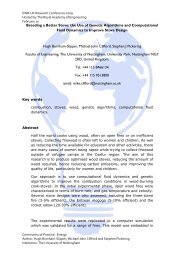

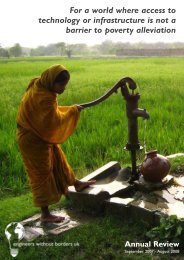
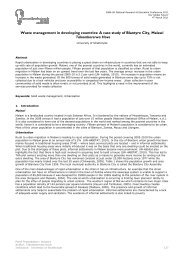
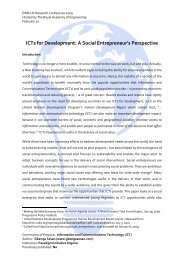
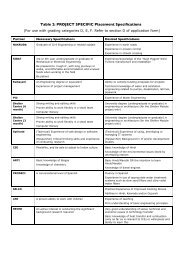


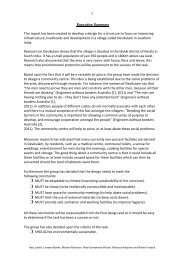
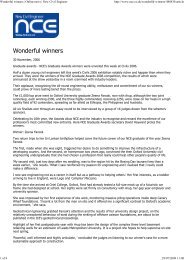

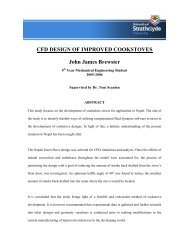

![Ethical Fundraising Guidance[1].pdf - Engineers Without Borders UK](https://img.yumpu.com/36288951/1/184x260/ethical-fundraising-guidance1pdf-engineers-without-borders-uk.jpg?quality=85)